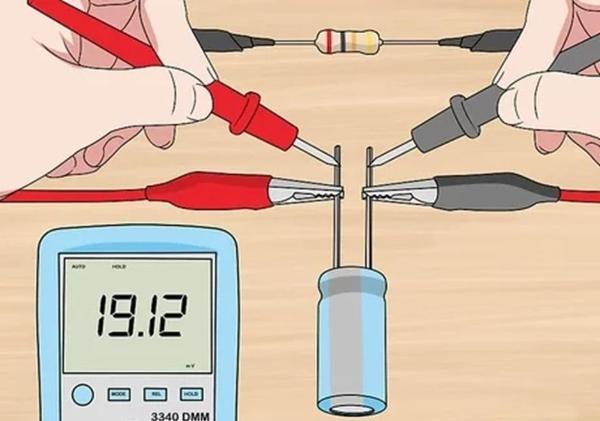Safety First Shock-Free Capacitor Discharging Guide
Image Source: https://www.wikihow.com/
Like energy storage devices in electronics, capacitors can shock you if not handled properly. This guide covers capacitor basics and safe discharge. Safety comes first! Learn how to handle these electrical components safely, whether you are an electronics enthusiast or a curious learner.
What Is A Capacitor?
In electrical and electronic work, a capacitor is an important part. Because capacitors store electric charge, people must adequately discharge them before working with them so they are not shocked. There are two conductors: conductive plates, wires, foils, or solids. This is the most basic form of a capacitor. Any insulating or dielectric material, like ceramic, air, or paper that has been soaked in acid, is used to separate these conductors.
Safety Precautions to Take
When working with capacitors, here are some general safety tips:
- Keep your grip on the capacitor low and comfortable to avoid touching the sparks.
- It is best to hold smaller capacitors with insulated pliers to avoid an electric shock while discharging them.
- Put on safety glasses all the time.
- Be careful when handling big capacitors because they can hold a high voltage even when the power is turned off.
- Do not charge capacitors with more current or voltage than what the instructions say.
- Use the right voltmeter to test capacitors and discharge them if needed before working on or near them.
- Once the high-voltage capacitor is empty, a wire should be connected across the terminals of a loose one.
- Do not connect the solder to the capacitor directly.
- Do not touch the wires or terminals of a live capacitor.
- Do not put out by force.
How To Discharge Your Capacitor?
Capacitors come in many sizes and shapes, but the ones that store the most energy and could be dangerous are usually the big cylindrical ones. Electrolytic capacitors made of aluminium and tantalum can fit a lot of stuff into a small space. Because their maximum voltage ratings are high, they work well in high-voltage situations. Most high-voltage capacitors are aluminium electrolytic capacitors, which look like small tin cans with two leads sticking out of the bottom. For those working on electronic projects, using a reliable PCB manufacturing service can ensure the quality and safety of your circuit boards.
1. Disconnect The Device's Power
Remove the device from whatever you are working on if it is not there, and make sure you cut off any power. This usually means unplugging the electronics from the wall or removing the car's battery. You can usually unplug the device you are working on from the wall in your home. If you can't, find the breaker box and flip the switch that controls the flow of electricity to the room you are working in.
2. Identify All Device Capacitors
Find the side of the capacitor with a "-" (minus) sign. This is where the cathode will be. The negative lead, or cathode, will connect to this side.
3. Access The Capacitor's Leads
To get to the capacitor's leads, turn the circuit board over. When working with electronics, do not touch anything metal. Circuit boards may have dangerously high energy levels before being safely discharged.
4. Discharge Pen To The Capacitor's Cathode
Connect the discharge pen's negative (black) end to the capacitor cathode. This is the lead you knew was the one with the minus sign on the capacitor's side. To discharge, touch the red tip of the pen to the other lead, which is the capacitor's anode. Do not use regular wires, screwdrivers, or wrenches to connect the capacitor's positive and negative terminals. This will damage the capacitor and could hurt the person doing it.
5. Discharge Using Multimeter
Pair up the probes on the multimeter with the posts on the capacitor. Two posts will stick out of the top of the capacitor. Connect the multimeter's red lead to one post and its black lead to another. Hold the leads on the posts while you look at the multimeter's screen. You might have to open the appliance or remove specific components to access the capacitor. You can get help from an application-specific repair manual if you need help finding or getting to the capacitor.
Conclusion
Safety is paramount when handling capacitors. Knowing how to discharge electronics safely makes you more capable of handling them. Always turn off the power, find the capacitor leads, and use a multimeter or discharge pen. Follow these steps to work with capacitors safely and avoid electric shocks. To explore the fantastic world of electronics safely, visit https://partstack.com/ for more exciting content and electronic solutions!

